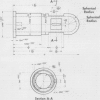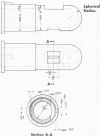Abstract
Permanent turbidity reference standards suitable for measurement of microbial suspensions were prepared by suspending finely divided titanium dioxide in aryl sulfonamide-formaldehyde or methylstyrene resins. Turbidities of these standards, adjusted to a useful range for microbiological and immunological studies, were compared with other reference standards in use today. Tube holders for a Coleman Photonephelometer and a Nepho-Colorimeter were modified to eliminate the water well and to allow use of optically standardized 10-, 16-, or 18-mm test tubes. The standards and the tube holders have been used satisfactorily for more than 12 years.
Full text
PDF
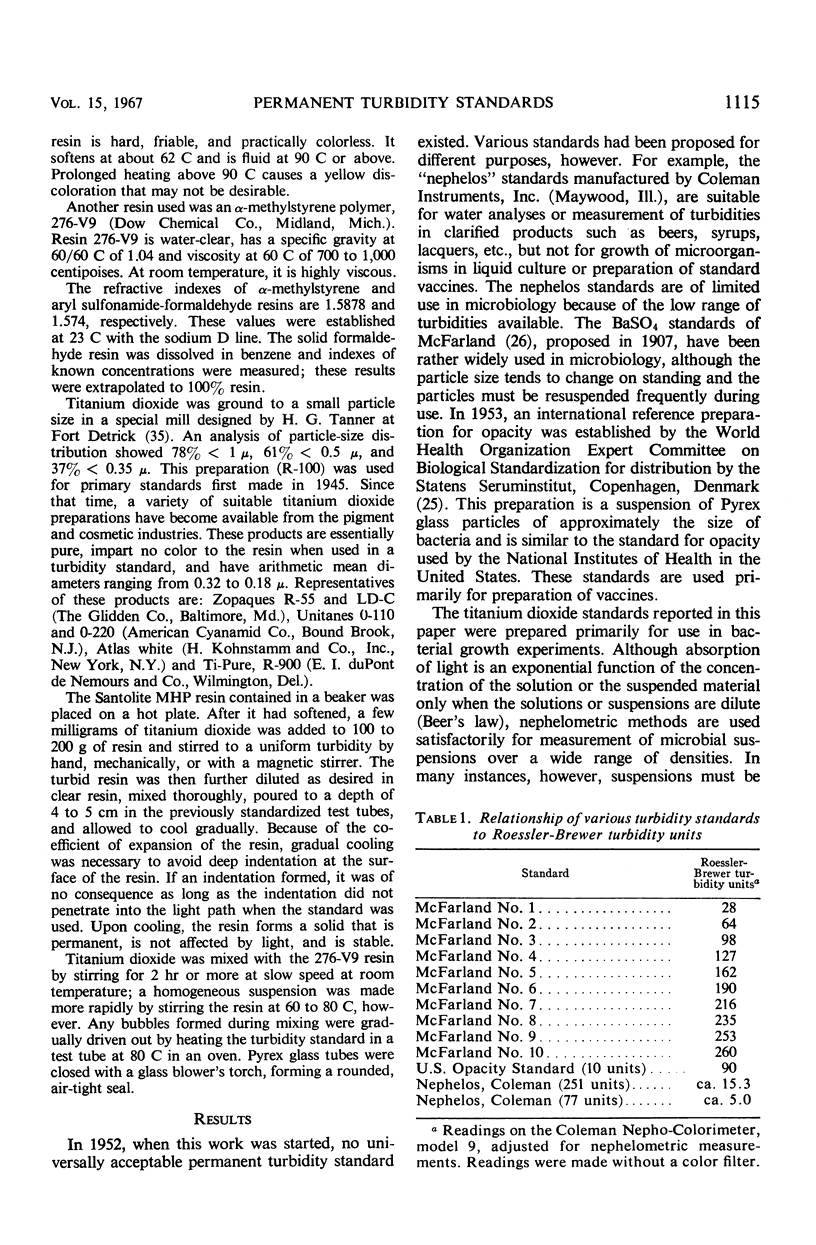
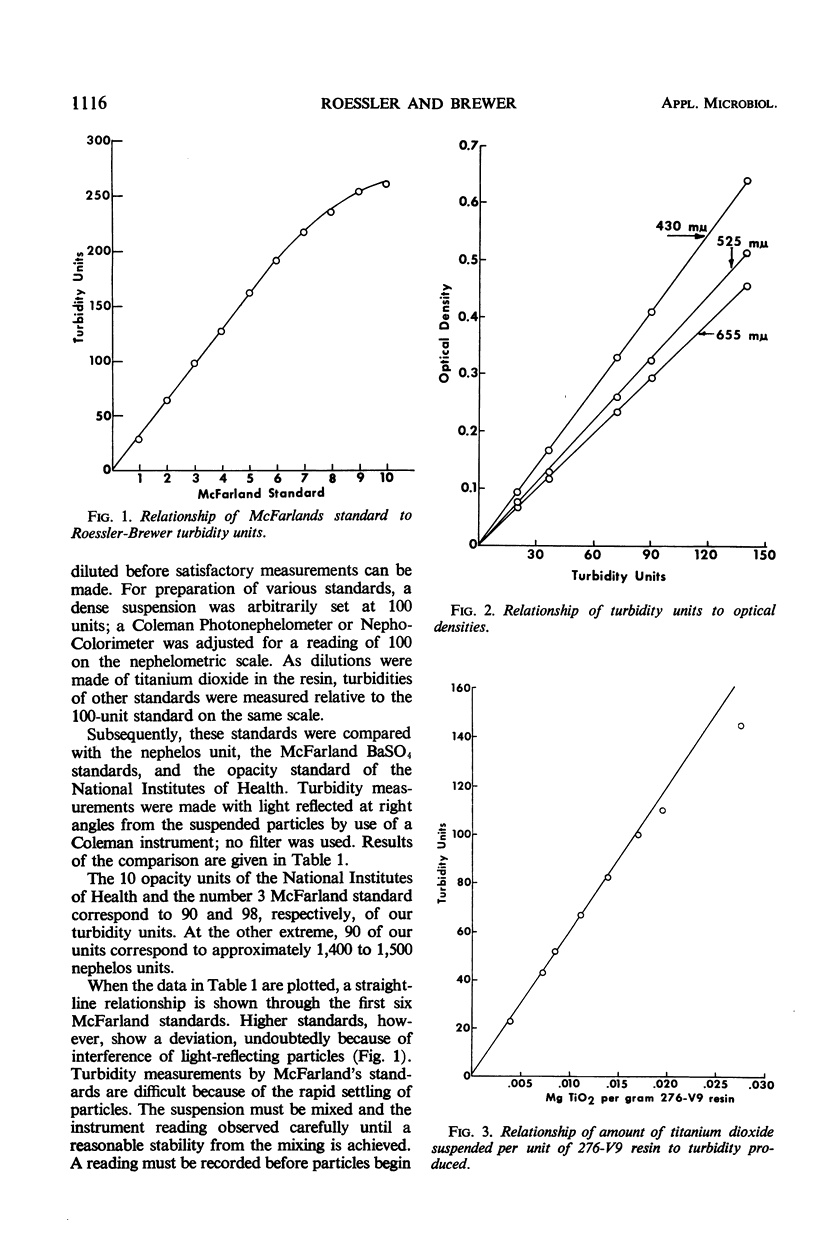
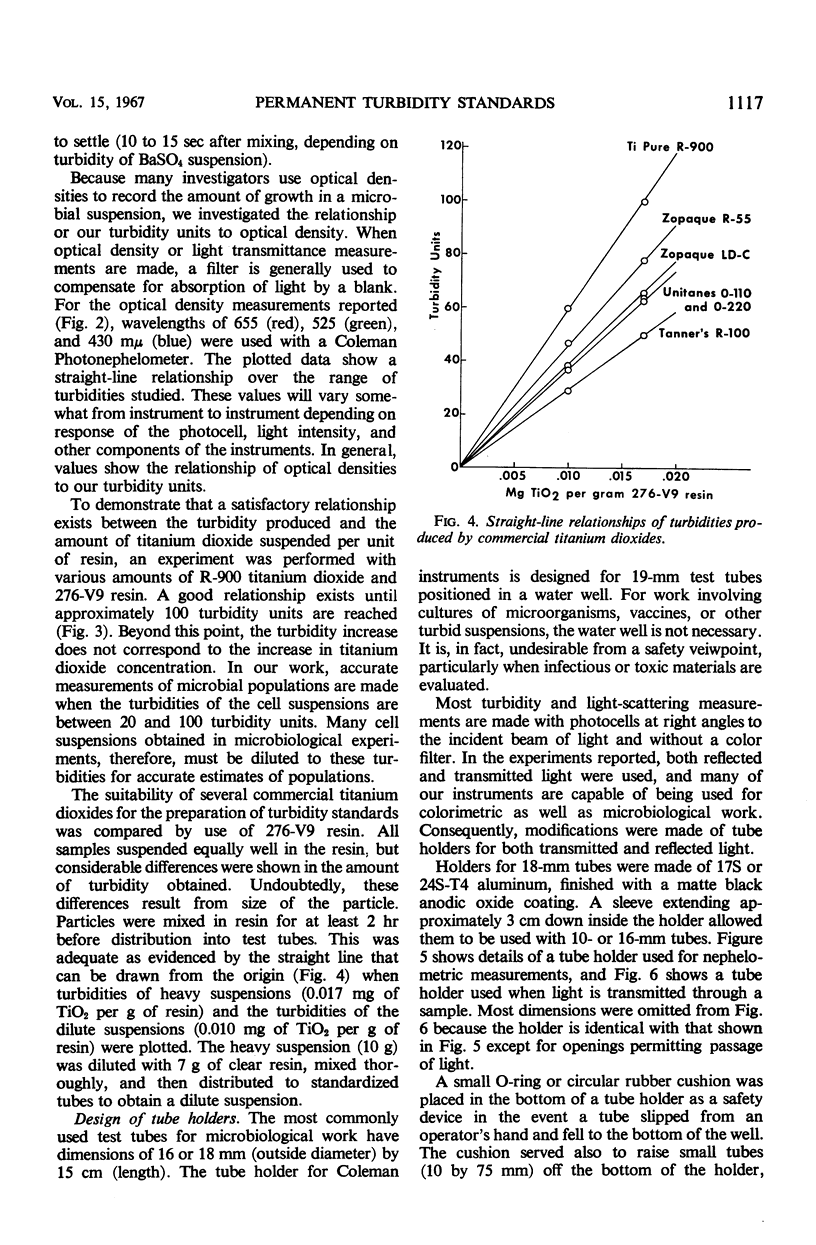
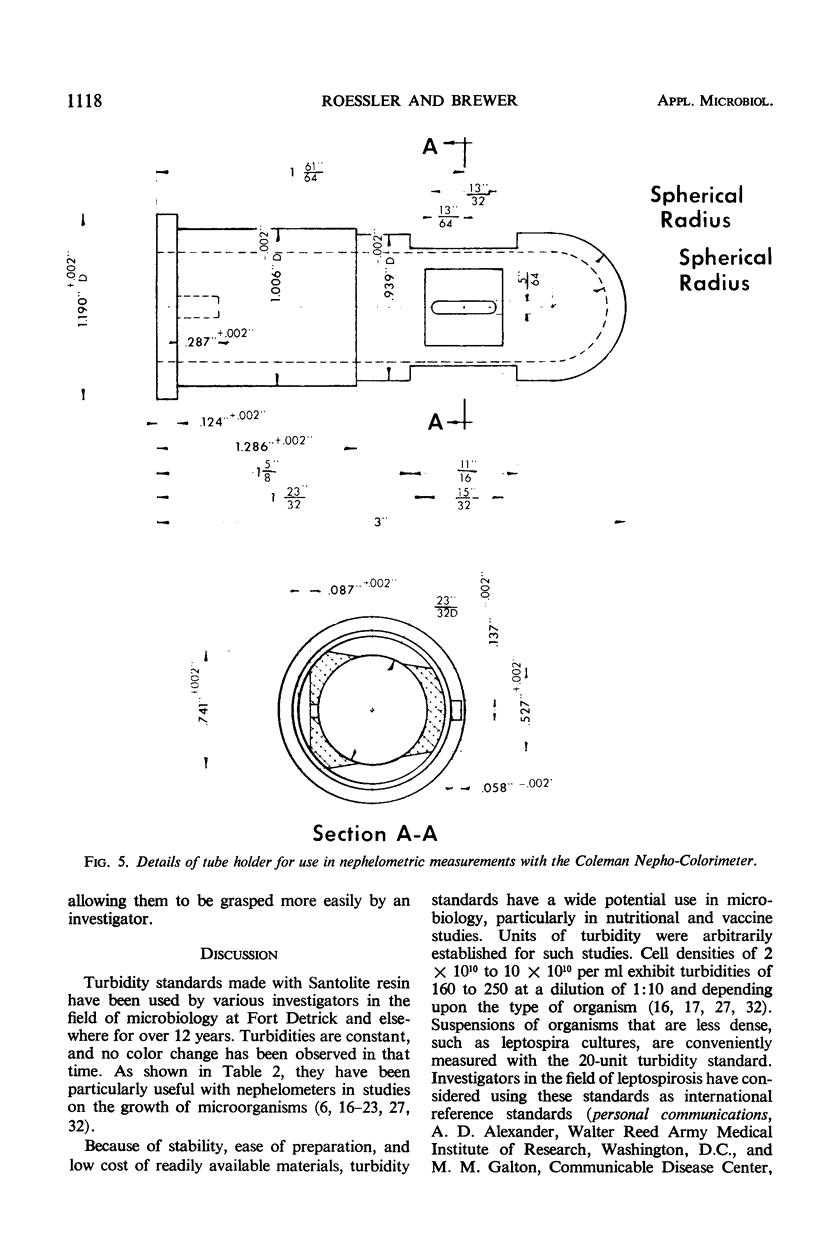
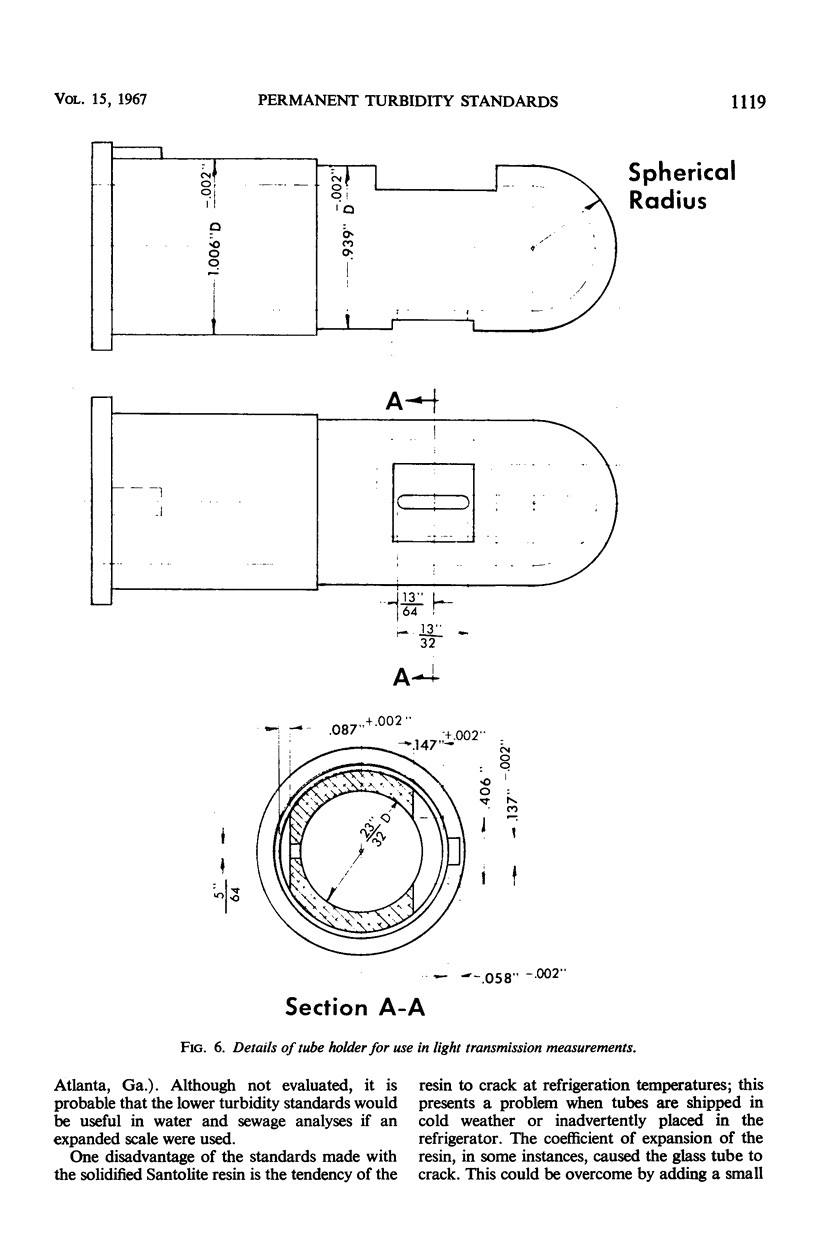
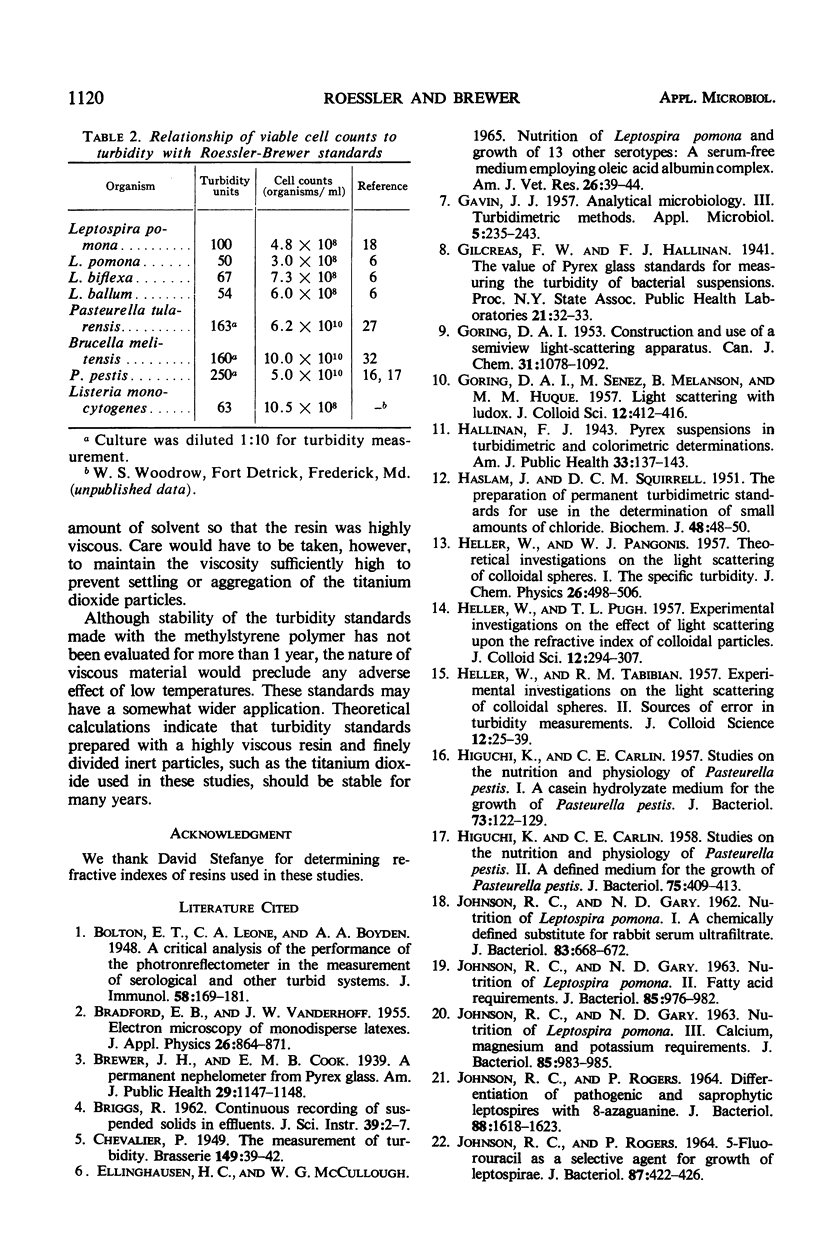
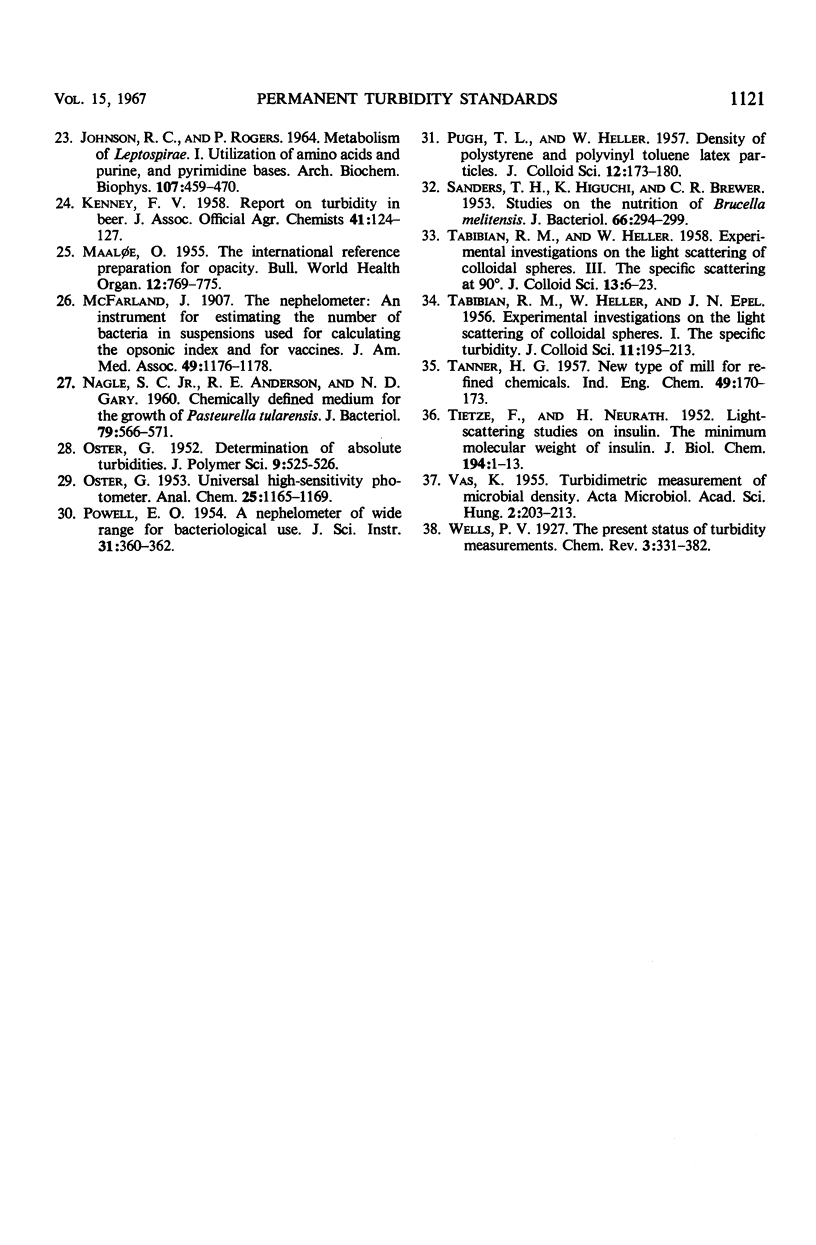
Images in this article
Selected References
These references are in PubMed. This may not be the complete list of references from this article.
- Brewer J. H., Cook E. B. A Permanent Nephelometer from Pyrex Glass. Am J Public Health Nations Health. 1939 Oct;29(10):1147–1148. doi: 10.2105/ajph.29.10.1147. [DOI] [PMC free article] [PubMed] [Google Scholar]
- ELLINGHAUSEN H. C., Jr, MCCULLOUGH W. G. NUTRITION OF LEPTOSPIRA POMONA AND GROWTH OF 13 OTHER SEROTYPES: A SERUM-FREE MEDIUM EMPLOYING OLEIC ALBUMIN COMPLEX. Am J Vet Res. 1965 Jan;26:39–44. [PubMed] [Google Scholar]
- GAVIN J. J. Microbiological process report: analytical microbiology. III. Turbidimetric methods. Appl Microbiol. 1957 Jul;5(4):235–243. doi: 10.1128/am.5.4.235-243.1957. [DOI] [PMC free article] [PubMed] [Google Scholar]
- HASLAM J., SQUIRRELL D. C. M. The preparation of permanent turbidimetric standards for use in the determination of small amounts of chloride. Biochem J. 1951 Jan;48(1):48–50. doi: 10.1042/bj0480048. [DOI] [PMC free article] [PubMed] [Google Scholar]
- HIGUCHI K., CARLIN C. E. Studies on the nutrition and physiology of Pasteurella pestis. I. A casein hydrolyzate medium for the growth of Pasteurella pestis. J Bacteriol. 1957 Jan;73(1):122–129. doi: 10.1128/jb.73.1.122-129.1957. [DOI] [PMC free article] [PubMed] [Google Scholar]
- HIGUCHI K., CARLIN C. E. Studies on the nutrition and physiology of Pasteurella pestis. II. A defined medium for the growth of Pasteurella pestis. J Bacteriol. 1958 Apr;75(4):409–413. doi: 10.1128/jb.75.4.409-413.1958. [DOI] [PMC free article] [PubMed] [Google Scholar]
- Hallinan F. J. Pyrex Suspensions in Turbidimetric and Colorimetric Determinations-Standards of Comparison for Bacterial Suspensions and in the Resazurin Test. Am J Public Health Nations Health. 1943 Feb;33(2):137–140. doi: 10.2105/ajph.33.2.137. [DOI] [PMC free article] [PubMed] [Google Scholar]
- JOHNSON R. C., GARY N. D. NUTRITION OF LEPTOSPIRA POMONA. II. FATTY ACID REQUIREMENTS. J Bacteriol. 1963 May;85:976–982. doi: 10.1128/jb.85.5.976-982.1963. [DOI] [PMC free article] [PubMed] [Google Scholar]
- JOHNSON R. C., GARY N. D. NUTRITION OF LEPTOSPIRA POMONA. III. CALCIUM, MAGNESIUM, AND POTASSIUM REQUIREMENTS. J Bacteriol. 1963 May;85:983–985. doi: 10.1128/jb.85.5.983-985.1963. [DOI] [PMC free article] [PubMed] [Google Scholar]
- JOHNSON R. C., GARY N. D. Nutrition of Leptospira pomona. 1. A chemically defined substitute for rabbit serum ultrafiltrate. J Bacteriol. 1962 Mar;83:668–672. doi: 10.1128/jb.83.3.668-672.1962. [DOI] [PMC free article] [PubMed] [Google Scholar]
- JOHNSON R. C., ROGERS P. 5-FLUOROURACIL AS A SELECTIVE AGENT FOR GROWTH OF LEPTOSPIRAE. J Bacteriol. 1964 Feb;87:422–426. doi: 10.1128/jb.87.2.422-426.1964. [DOI] [PMC free article] [PubMed] [Google Scholar]
- JOHNSON R. C., ROGERS P. DIFFERENTIATION OF PATHOGENIC AND SAPROPHYTIC LEPTOSPIRES WITH 8-AZAGUANINE. J Bacteriol. 1964 Dec;88:1618–1623. doi: 10.1128/jb.88.6.1618-1623.1964. [DOI] [PMC free article] [PubMed] [Google Scholar]
- JOHNSON R. C., ROGERS P. METABOLISM OF LEPTOSPIRAE. I. UTILIZATION OF AMINO ACIDS AND PURINE, AND PYRIMIDINE BASES. Arch Biochem Biophys. 1964 Sep;107:459–470. doi: 10.1016/0003-9861(64)90302-9. [DOI] [PubMed] [Google Scholar]
- MAALØE O. The International Reference Preparation for Opacity; notes and description. Bull World Health Organ. 1955;12(5):769–775. [PMC free article] [PubMed] [Google Scholar]
- NAGLE S. C., Jr, ANDERSON R. E., GARY N. D. Chemically defined medium for the growth of Pasteurella tularensis. J Bacteriol. 1960 Apr;79:566–571. doi: 10.1128/jb.79.4.566-571.1960. [DOI] [PMC free article] [PubMed] [Google Scholar]
- SANDERS T. H., HIGUCHI K., BREWER C. R. Studies on the nutrition of Brucella melitensis. J Bacteriol. 1953 Sep;66(3):294–299. doi: 10.1128/jb.66.3.294-299.1953. [DOI] [PMC free article] [PubMed] [Google Scholar]
- TIETZE F., NEURATH H. Light scattering studies on insulin; the minimum molecular weight of insulin. J Biol Chem. 1952 Jan;194(1):1–13. [PubMed] [Google Scholar]
- VAS K. Turbidimetric measurement of microbial density. Acta Microbiol Acad Sci Hung. 1955;2(3):203–213. [PubMed] [Google Scholar]



